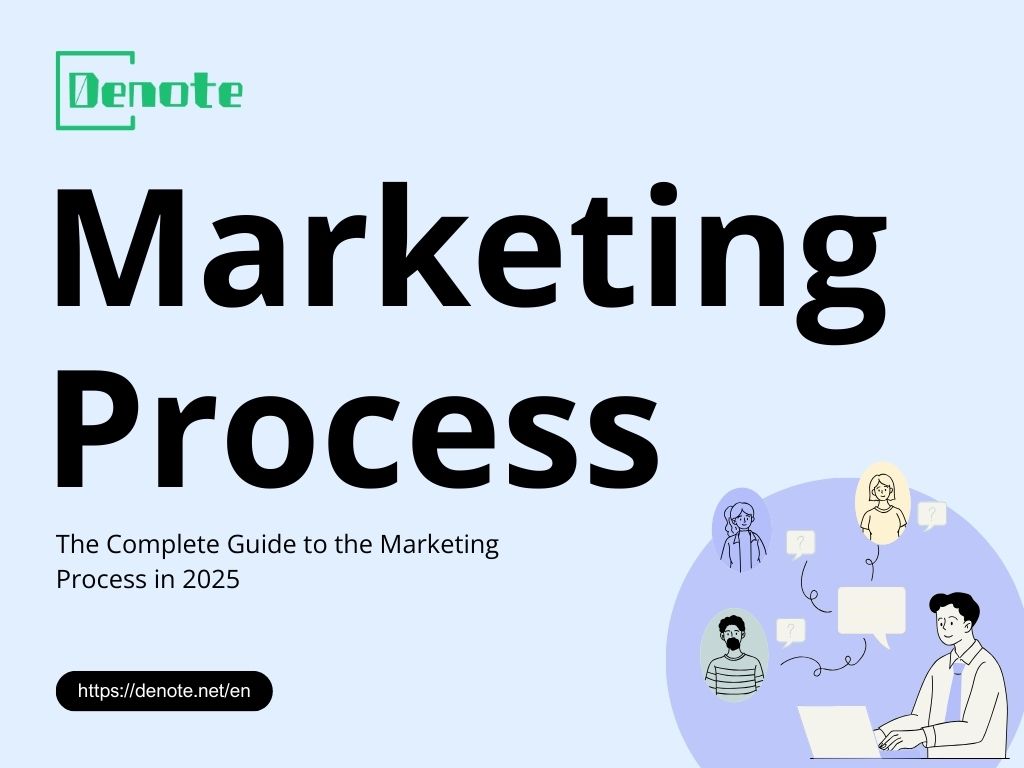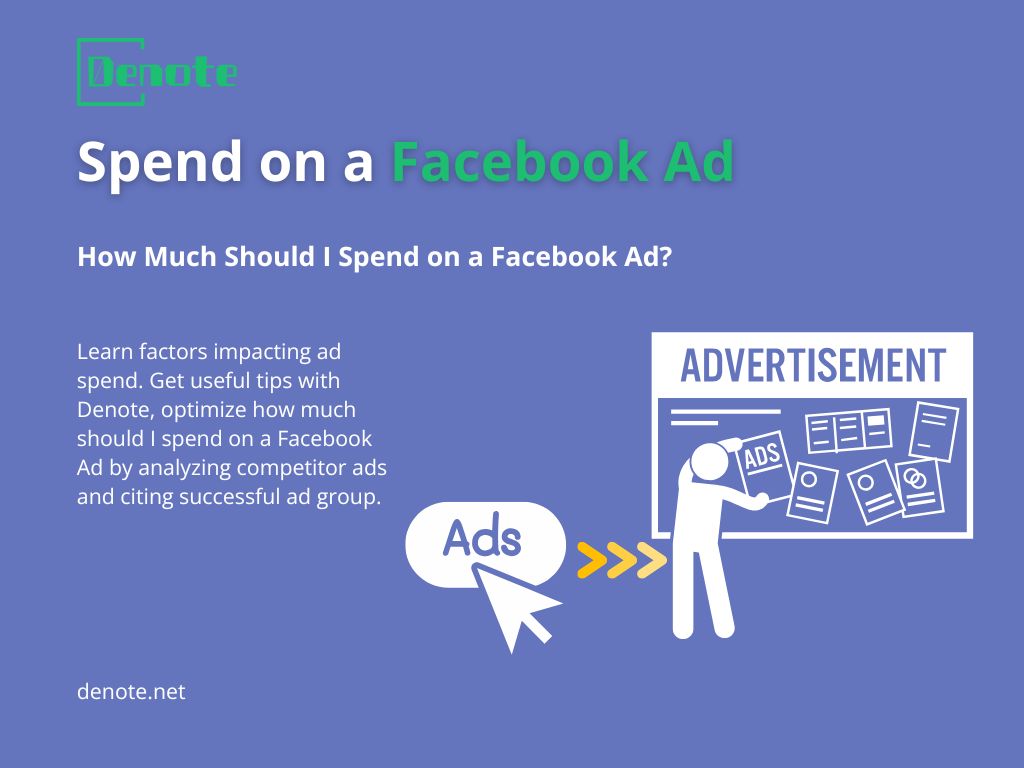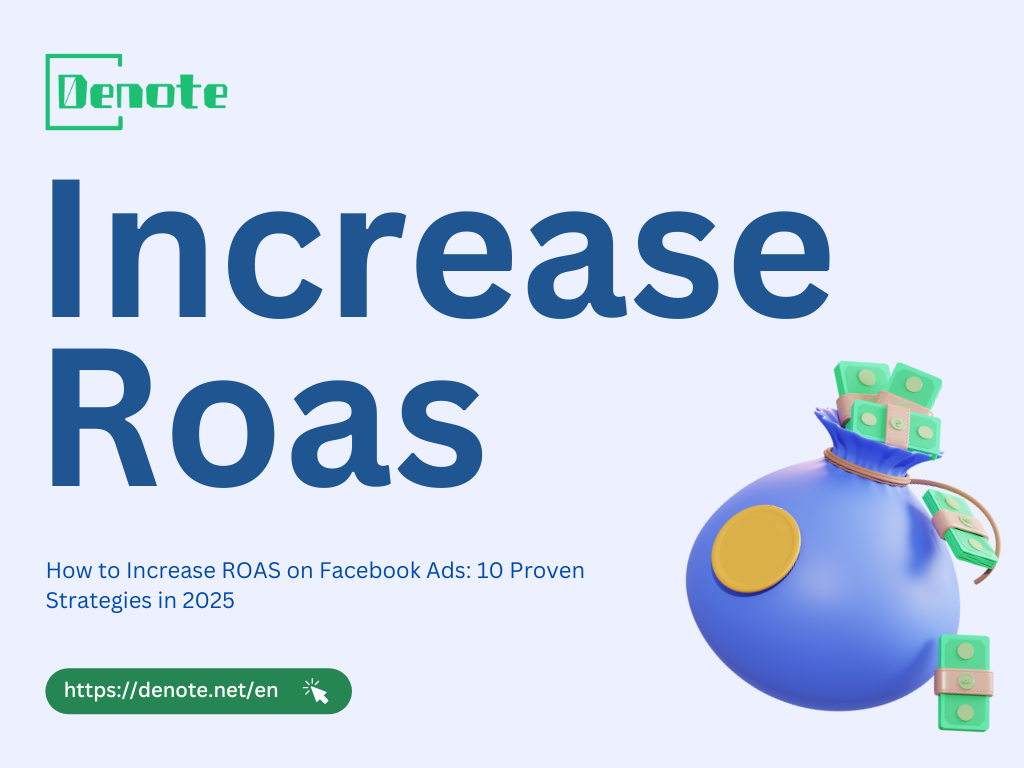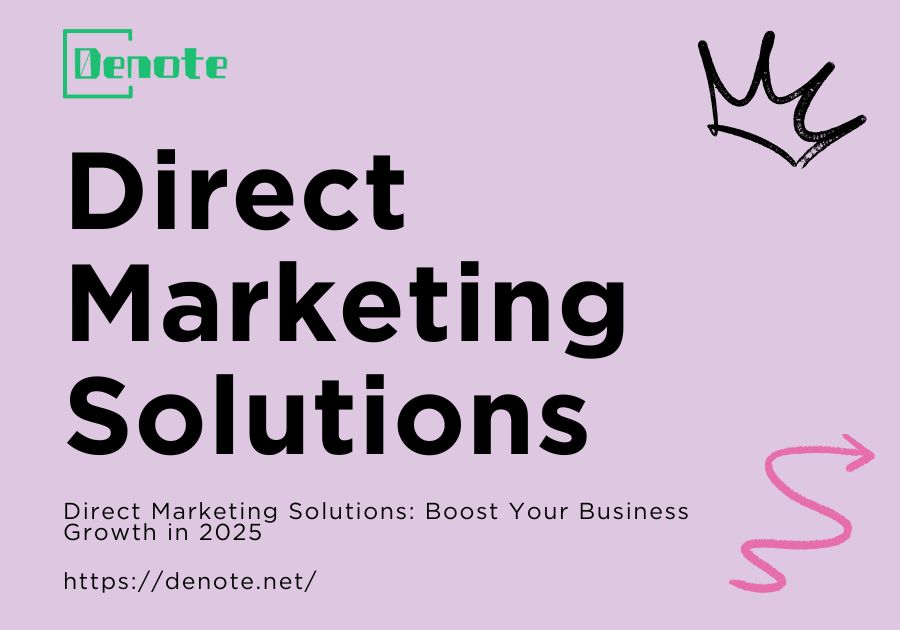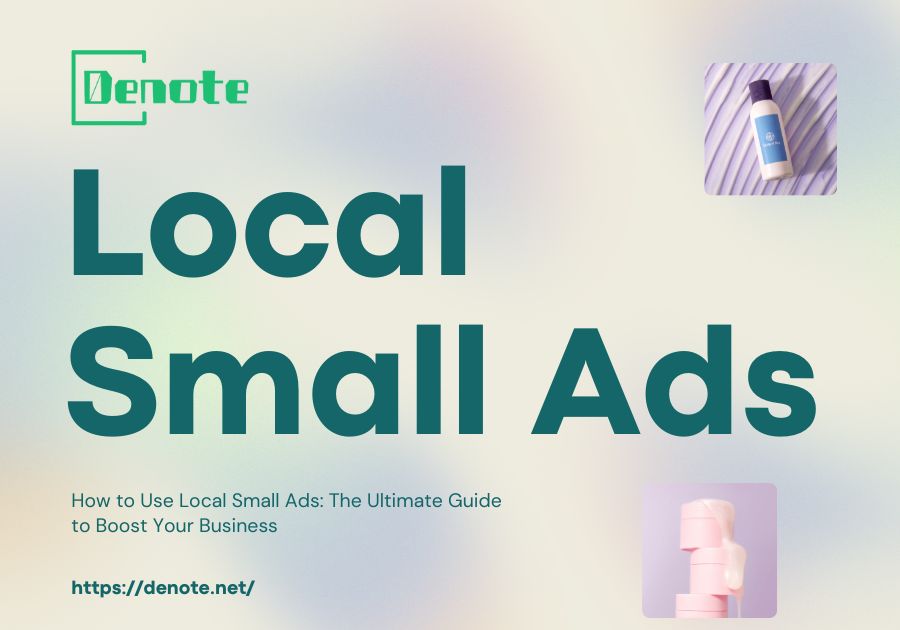What Is Personal Advertising? The Complete Guide in 2025
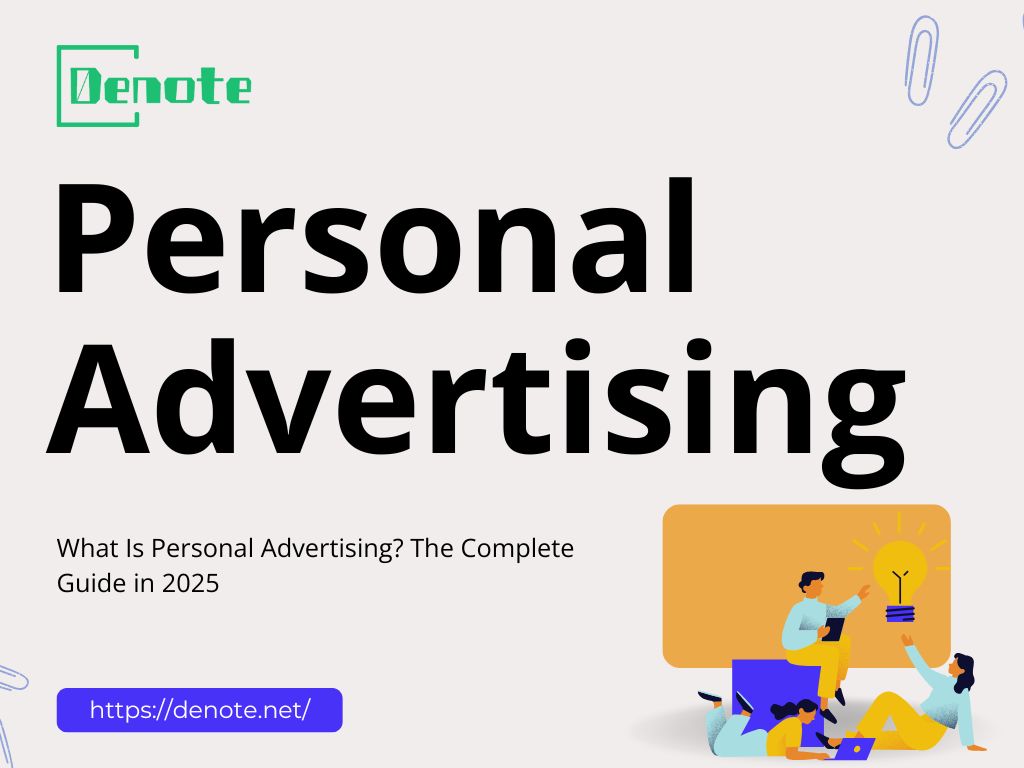
- What Is Personal Advertising
- How Personal Advertising Differs from Traditional Advertising
- How Personal Advertising Works
- Benefits of Personal Advertising
- Real-World Examples of Personal Advertising
- Tools and Platforms Supporting Personal Advertising
- Challenges and Ethical Considerations
- Best Practices for Effective Personal Advertising
- Conclusion
What Is Personal Advertising
Imagine walking into your favorite coffee shop, and the barista already knows your name, your favorite drink, and even the kind of mood music you enjoy. Personal advertising works in much the same way — it’s advertising tailored specifically to you, based on your preferences, behaviors, and digital footprints. Instead of broadcasting generic ads like a megaphone in a crowded market, personal advertising acts more like a whispered recommendation from a trusted friend who truly understands what you want.
At its core, personal advertising is the practice of delivering customized advertisements to individual users by leveraging detailed data about their interests, online activities, demographics, and past purchases. This approach goes far beyond traditional advertising’s one-size-fits-all model, making ads feel less like interruptions and more like helpful nudges that speak directly to your needs.
It’s no exaggeration to say that personal advertising is revolutionizing the digital marketing landscape. With the explosion of data and sophisticated targeting technology, brands can now connect with consumers in ways that were once the stuff of marketing dreams — almost like having a personal shopper who knows exactly what you want before you do.
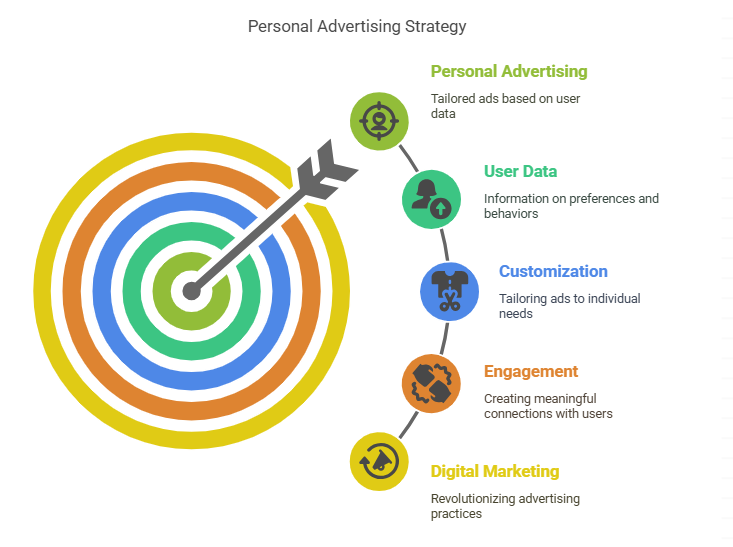
How Personal Advertising Differs from Traditional Advertising
Traditional advertising is like casting a wide net into the ocean, hoping to catch a few fish among millions. It relies heavily on broad demographics — age groups, gender, location — but often misses the mark when it comes to individual interests or behaviors. You might have seen billboards, TV commercials, or print ads that seemed utterly irrelevant to you. That’s because traditional ads speak to “the masses,” not to you personally.
In contrast, personal advertising is akin to using a fishing spear to target specific fish — precise, efficient, and intentional. By analyzing data points such as browsing habits, search history, and social media interactions, marketers can create laser-focused campaigns that appeal to your unique preferences. This means fewer wasted impressions and a much higher chance that the ad will resonate with you.
Traditional ads? Ugh, they’re like that guy at a party who keeps interrupting your story to talk about his crypto startup. Personal advertising, though, tries to be chill—almost like a friend who knows your taste and slides you a killer Netflix rec because they actually paid attention to what you binge. It’s not some wild stab in the dark; there’s a whole sneaky operation making sure those suggestions hit the mark.
How Personal Advertising Works
Personal advertising is powered by a complex ecosystem of data collection, profile building, and real-time decision-making — a digital dance choreographed by algorithms and machine learning models.
Data Collection Methods
The first step in personal advertising is gathering data. This can come from a variety of sources:
- First-party data collected directly by brands through their websites, apps, or loyalty programs.
- Third-party data obtained from external data providers who aggregate information from multiple platforms.
- User behavior tracking via cookies, pixels, and device IDs.
First-Party vs Third-Party Data
First-party data is the goldmine that brands own and trust. It’s like getting information straight from the source — your direct interactions with a company’s website, app, or service. Because it’s collected with your consent and reflects genuine interest, first-party data is typically more accurate and valuable for personal advertising.
Third-party data, on the other hand, is collected by other companies across various websites and apps, then sold or shared. Think of it as gathering gossip from many social circles to build a more detailed picture. While it broadens reach, third-party data can be less reliable and raises more privacy concerns.
Tracking Pixels and Cookies
Tracking pixels are tiny, invisible images embedded in web pages or emails that notify advertisers when you interact with their content. Cookies are small text files stored in your browser that keep track of your browsing behavior, preferences, and login information. Together, they are the workhorses of personal advertising, helping brands understand what you like, how long you stay, and when you’re ready to buy.
Building User Profiles and Segmentation
Once data is collected, the next step is to create detailed user profiles. Imagine a virtual dossier that compiles everything from your age and location to your favorite brands and recent purchases. These profiles are then grouped into segments — clusters of users with shared traits or behaviors.
Segmentation allows advertisers to tailor messages precisely. For example, a sports apparel brand might target active millennials interested in running shoes separately from casual shoppers who prefer athleisure wear. This is the secret sauce behind personal advertising’s success — relevant ads shown to the right people at the right time.
Real-Time Ad Delivery Mechanisms
Personalized ads aren’t just some creepy data grab—they’re all about being quick on the draw. These real-time bidding things? Basically, advertisers swoop in and snag ad space in the blink of an eye, just because you happened to click on a site.
Picture this: you’re scrolling through some hiking boots, maybe half-thinking about getting outside more. Suddenly, boom—there’s a deal on backpacks staring you in the face. It’s like the internet’s reading your mind, but really, it’s just these ad systems hustling to get you stuff you might actually want, instead of tossing useless junk your way.
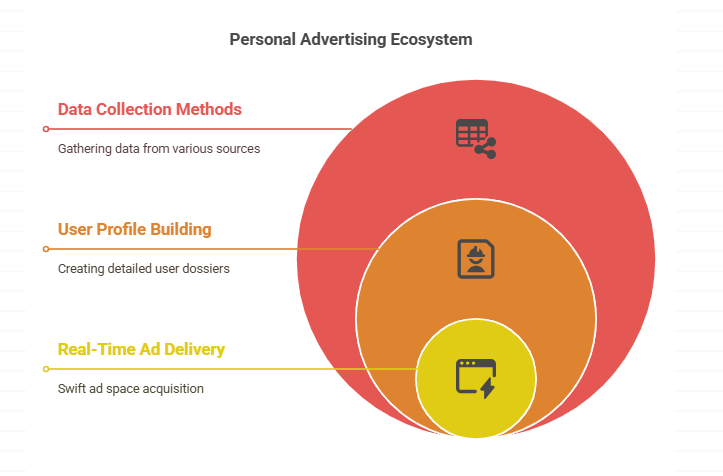
Benefits of Personal Advertising
The rise of personal advertising isn’t just a trend — it’s a strategic necessity for brands wanting to thrive in today’s competitive marketplace. Let’s dive into the key benefits:
Higher Engagement and Conversion Rates
Let’s be real—when an ad actually gets you (“Hey, that’s my favorite band!” or “Whoa, I was just looking for those shoes!”), it’s way harder to ignore. You’re probably gonna click. Maybe even buy. Creepy sometimes? Sure. But it works. Personalized ads don’t just yell into the void; they slide into your feed like they know you. Old-school, one-size-fits-all ads? Snooze-fest. The tailored stuff? That’s what actually makes people pull out their wallets.
Cost-Efficiency Through Precise Targeting
Why waste your budget showing ads to people who don’t care? Personal advertising uses data-driven insights to pinpoint the most promising prospects, minimizing wasted spend and maximizing return on investment (ROI). Brands can optimize their budgets by focusing resources on audiences with the highest likelihood of conversion.
Improved User Experience
Far from annoying users, personal advertising can enhance the overall online experience. By showing ads aligned with your interests and needs, it reduces irrelevant noise and helps you discover products or services that genuinely add value. Think of it as a helpful guide through the overwhelming digital landscape.
Real-World Examples of Personal Advertising
Sometimes, the best way to understand something is to see it in action. Personal advertising is all around us, quietly shaping our online experiences in subtle yet powerful ways.
Facebook and Instagram Ad Targeting
Ever get the feeling your phone’s basically reading your mind? Yeah, welcome to the world of Meta ads. You scroll through Instagram, and—bam—there’s that pair of sneakers you Googled once at 2 a.m. Creepy? Maybe. Effective? Oh, absolutely.
See, Meta’s not just tossing random ads your way. They’re hoarding every scrap of data you give them—likes, follows, that one weird page you accidentally hit “interested” on—and using it to sling ads straight at your wallet. It’s not witchcraft; it’s just a bunch of nerdy algorithms working overtime.
So you look up running shoes, and suddenly your feed is a non-stop Nike runway. The whole point? Catch you right when your brain’s thinking, “Hmm, maybe I should buy new kicks.” Honestly, it’s borderline genius. Annoying, but genius.
Amazon and E-commerce Product Recommendations
Amazon’s product recommendations are a classic example of personal advertising done right. The “Customers who bought this also bought…” and “Recommended for you” sections are personalized ads driven by your browsing history, purchase behavior, and even time spent on product pages.
This approach doesn’t just increase sales; it transforms the shopping experience into a tailored journey, almost like having a personal shopper who knows your tastes inside and out. It’s no wonder Amazon’s conversion rates soar — personal advertising ensures customers find what they want, often before they even know they want it.
YouTube Pre-Roll Ads Based on Watch History
YouTube’s pre-roll ads (the ones that play before your video) often feel eerily relevant. That’s because YouTube personalizes these ads based on your watch history, search queries, and engagement patterns. Love cooking shows? Expect ads for kitchen gadgets. Into fitness? Sports gear ads will likely pop up.
By matching ad content to viewer interests in real-time, YouTube not only improves ad effectiveness but also enhances the user experience — you’re more likely to watch an ad that feels relevant than one that feels like a random interruption.
Tools and Platforms Supporting Personal Advertising
Behind every successful personal advertising campaign lies a suite of powerful tools and platforms that help marketers analyze data, segment audiences, and automate ad delivery.
Google Ads and Dynamic Search Ads
Google Ads is a cornerstone of digital advertising. Its dynamic search ads feature is a prime example of personal advertising in action. By crawling a website’s content, Google automatically generates ads tailored to users’ search queries. This ensures ads are relevant to what potential customers are actively looking for, improving click-through and conversion rates.
Meta Ads Manager
Meta Ads Manager? Oh, that beast is basically the Swiss Army knife for Facebook and Insta ads. You wanna get picky about who sees your stuff? Go wild—age, hobbies, weird behaviors, heck, upload your own list of people if you want. The analytics are kinda insane too. You can basically stalk your own ads, tweak things nonstop, and chase those sweet conversion numbers until your eyes cross. Honestly, if you’re into squeezing every drop out of your ad budget, this thing’s your playground.
Role of Tools like Denote in Competitive Research
While platforms like Google Ads and Meta Ads Manager help execute personal advertising, tools like Denote elevate strategy by offering competitive research insights. Denote helps marketers spy on competitor ad creatives, track trending campaigns, and uncover winning ad strategies in real-time.
By understanding what works for others, advertisers can fine-tune their personal advertising approaches, craft better creatives, and stay ahead in a fiercely competitive landscape. Denote is not just a tool; it’s a secret weapon in the arsenal of savvy marketers striving for personal advertising excellence.
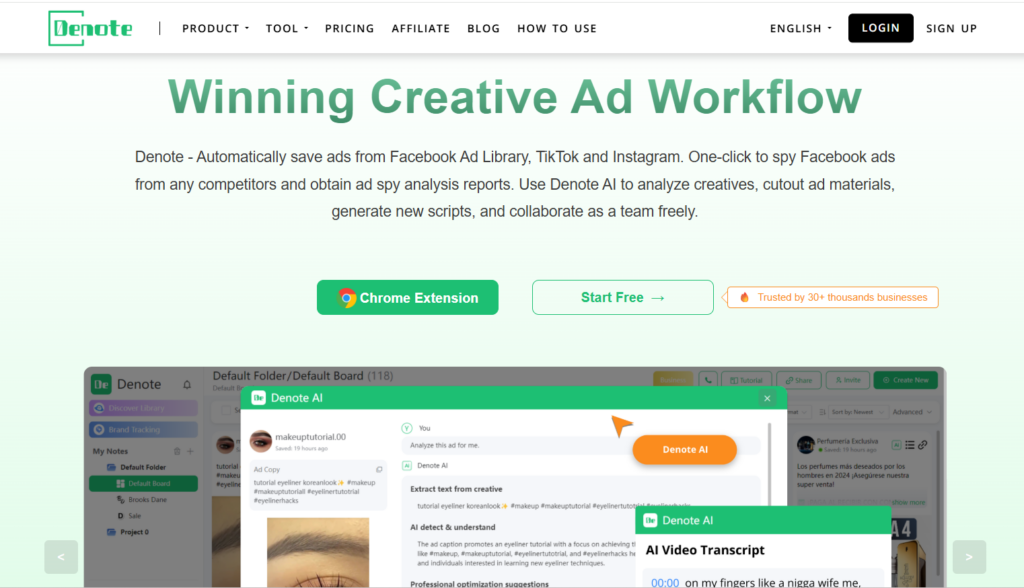
Challenges and Ethical Considerations
As powerful as personal advertising is, it comes with a set of challenges and ethical questions that marketers must navigate carefully.
Data Privacy and Regulations (GDPR, CCPA)
Privacy concerns have become a hot topic worldwide. Regulations like Europe’s GDPR and California’s CCPA have raised the bar on how companies collect, store, and use personal data. Marketers must ensure compliance to avoid hefty fines and maintain consumer trust.
This means obtaining clear user consent before tracking data, providing options to opt out, and being transparent about data use. Personal advertising must balance effectiveness with respect for privacy — walking the tightrope between personalization and intrusion.
Ad Fatigue and Over-Personalization Risks
Even the most personalized ads can become tiresome if users see the same message repeatedly. Ad fatigue can cause annoyance and reduce campaign effectiveness. Moreover, over-personalization risks turning ads into creepy, overly invasive experiences that alienate users.
Smart marketers combat this by rotating creatives, limiting ad frequency, and incorporating diversity in messaging to keep campaigns fresh and engaging.
Transparency and User Consent
Transparency isn’t just a regulatory checkbox; it’s essential for building trust. Users should know what data is being collected and how it’s used in personal advertising. Clear privacy policies, easy-to-understand consent forms, and honest communication foster positive relationships between brands and consumers.
Best Practices for Effective Personal Advertising
With great power comes great responsibility — and great opportunity. Here are some best practices to maximize the benefits of personal advertising while respecting users.
Define Clear Audience Segments
Effective personal advertising starts with clear audience segmentation. Rather than vague demographics, focus on behaviors, interests, and purchase intent. The more precise your segments, the more relevant your ads will be.
Create Modular, Adaptable Creatives
In personal advertising, flexibility wins. Modular creatives — like building blocks — let you mix and match images, headlines, and calls-to-action to suit each segment. Selling running shoes? Show rugged trails to athletes, urban parks to casual joggers.
These plug-and-play components work beautifully with Google Ads and Meta Ads Manager, allowing automated systems to generate ultra-personalized ads in real time — without breaking your brand consistency.
Test and Optimize Regularly
Honestly, nobody nails a campaign on the first try. You gotta mess around with A/B testing—try out different messages, switch up the visuals, maybe even shake up who you’re targeting. Keep an eye on what’s working (and what’s totally bombing), then tweak things on the fly. That’s how you actually boost ROI and make the whole thing less of a headache for users.
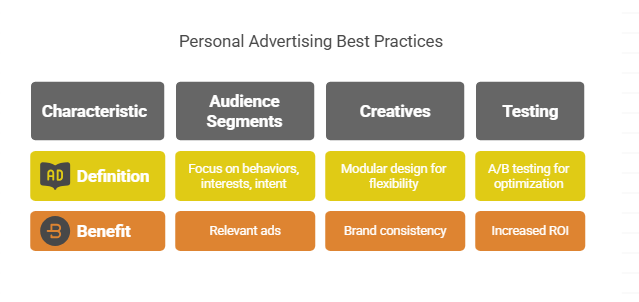
Conclusion
Personal advertising is no longer just a buzzword — it’s the future of digital marketing. By harnessing rich data, sophisticated targeting, and real-time delivery, brands can connect with consumers on a deeply individual level, boosting engagement, conversions, and satisfaction.
